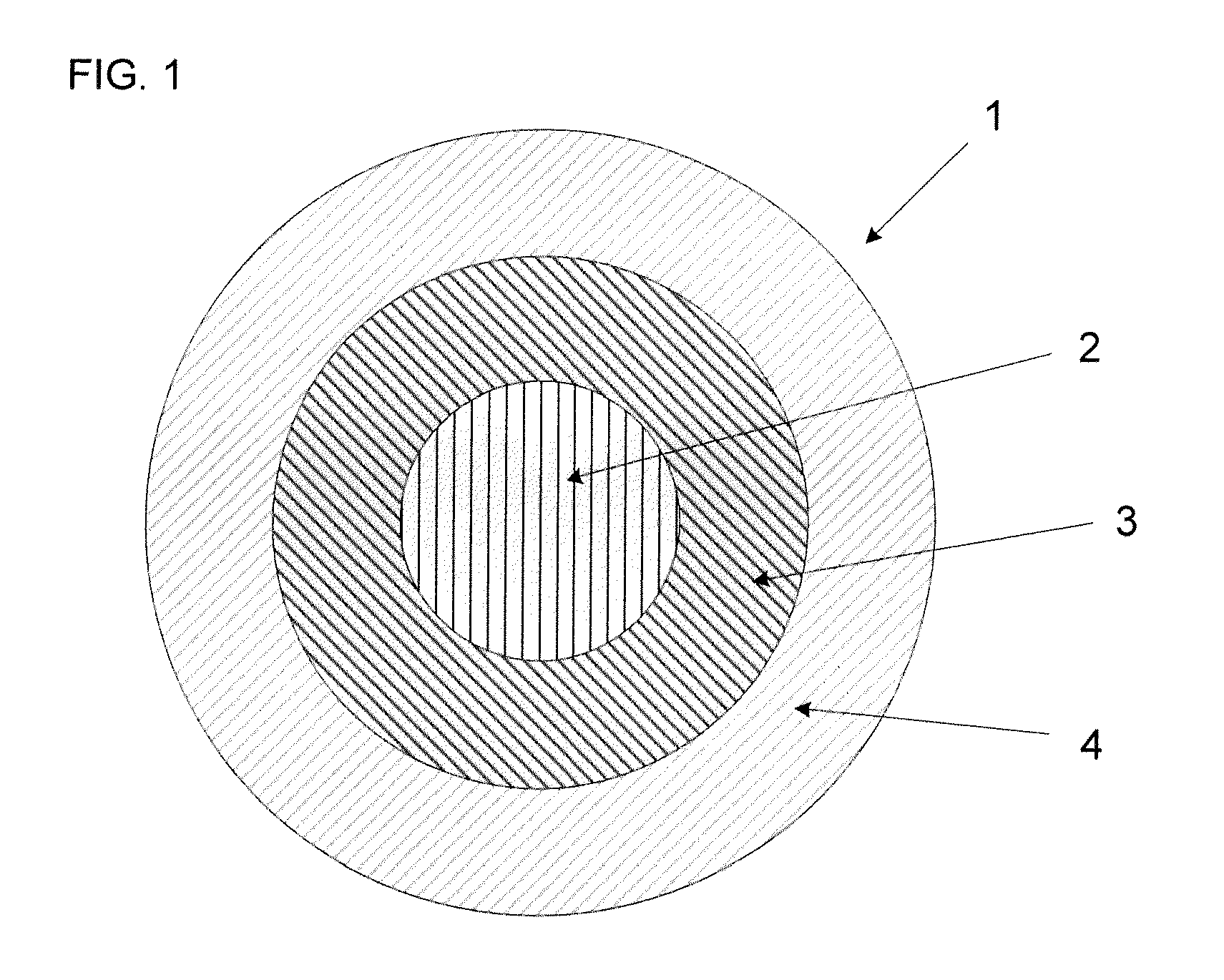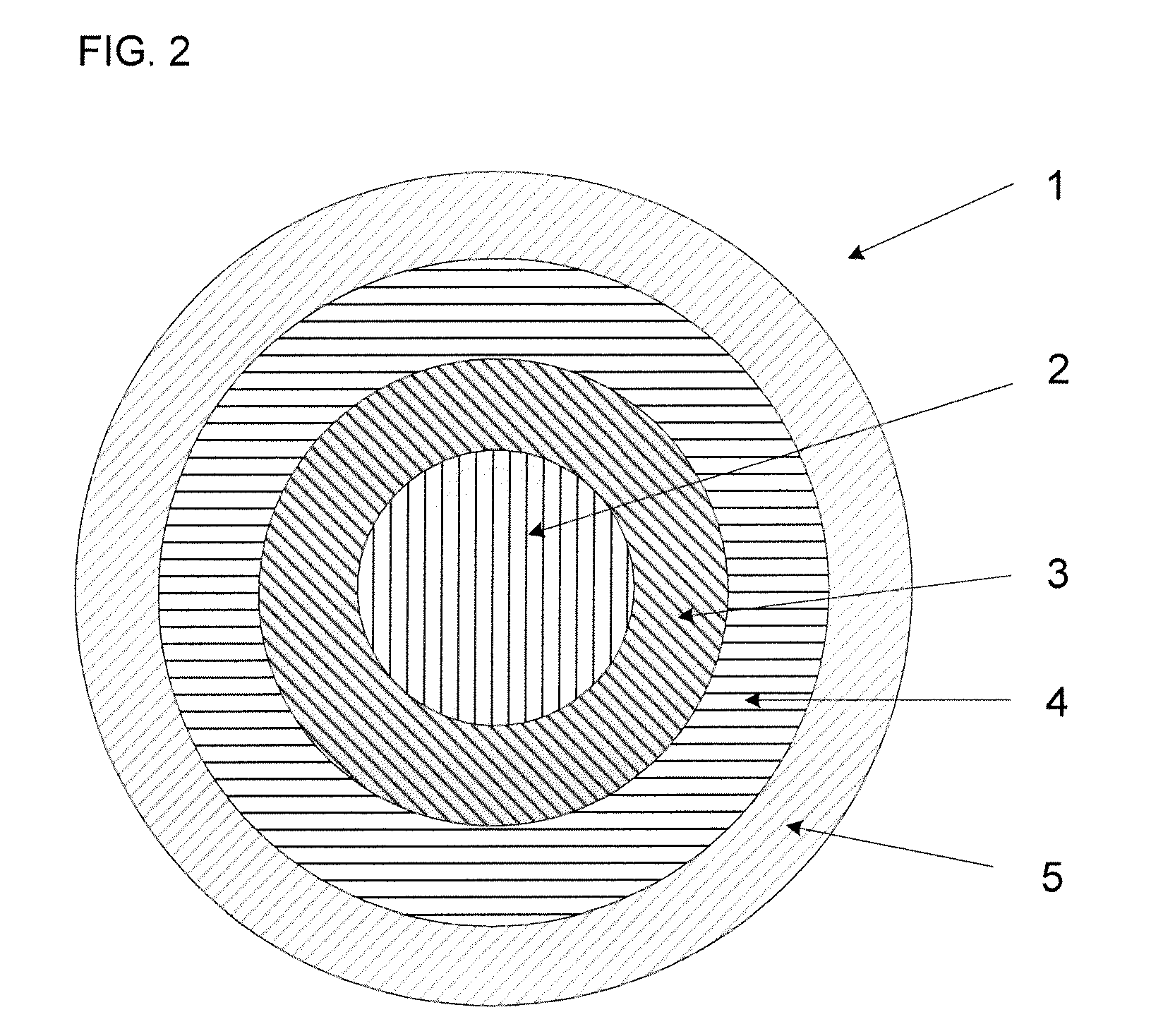Multi-layer golf ball construction
a golf ball and multi-layer technology, applied in the field of multi-layer golf balls, can solve the problems of affecting the distance the ball travels, balata-covered balls, and not providing great distance, so as to increase the ball's capacity, generate even more spin, and reduce the effect of spin
- Summary
- Abstract
- Description
- Claims
- Application Information
AI Technical Summary
Benefits of technology
Problems solved by technology
Method used
Image
Examples
example 1
[0240]A six-piece ball was prepared as follows.
[0241]The core was made by the standard process that includes mixing the polybutadiene core material with the peroxide / zinc diacrylate-based crosslinking package in a two roll mill, extruding the mixture, and then forming and curing the cores under heat and pressure in a compression molding cycle to yield a core having a diameter of 1.142 in.
[0242]An inner mantle layer made from a polyalkenamer composition was initially injection molding around the core followed by curing under heat and pressure in a compression molding cycle sufficient to result in a layer having an on the ball hardness of approximately 45 D the resulting golf ball precursor having a diameter of 1.262 in.
[0243]An intermediate mantle layer made from a polyalkenamer composition was initially injection molding around the core followed by curing under heat and pressure in a compression molding cycle sufficient to result in a layer having an on the ball hardness of approxim...
example 2
[0247]A six-piece ball was prepared as follows.
[0248]The core was made by the standard process that includes mixing the polybutadiene core material with the peroxide / zinc diacrylate-based crosslinking package in a two roll mill, extruding the mixture, and then forming and curing the cores under heat and pressure in a compression molding cycle to yield a core having a diameter of 1.142 in.
[0249]An inner mantle layer made from a polyalkenamer composition was initially injection molding around the core followed by curing under heat and pressure in a compression molding cycle sufficient to result in a layer having an on the ball hardness of approximately 45 D the resulting golf ball precursor having a diameter of 1.264 in.
[0250]An intermediate mantle layer made from a polyalkenamer composition was initially injection molding around the core followed by curing under heat and pressure in a compression molding cycle sufficient to result in a layer having an on the ball hardness of approxim...
PUM
| Property | Measurement | Unit |
|---|---|---|
| thickness | aaaaa | aaaaa |
| thickness | aaaaa | aaaaa |
| thickness | aaaaa | aaaaa |
Abstract
Description
Claims
Application Information
 Login to View More
Login to View More - R&D
- Intellectual Property
- Life Sciences
- Materials
- Tech Scout
- Unparalleled Data Quality
- Higher Quality Content
- 60% Fewer Hallucinations
Browse by: Latest US Patents, China's latest patents, Technical Efficacy Thesaurus, Application Domain, Technology Topic, Popular Technical Reports.
© 2025 PatSnap. All rights reserved.Legal|Privacy policy|Modern Slavery Act Transparency Statement|Sitemap|About US| Contact US: help@patsnap.com



